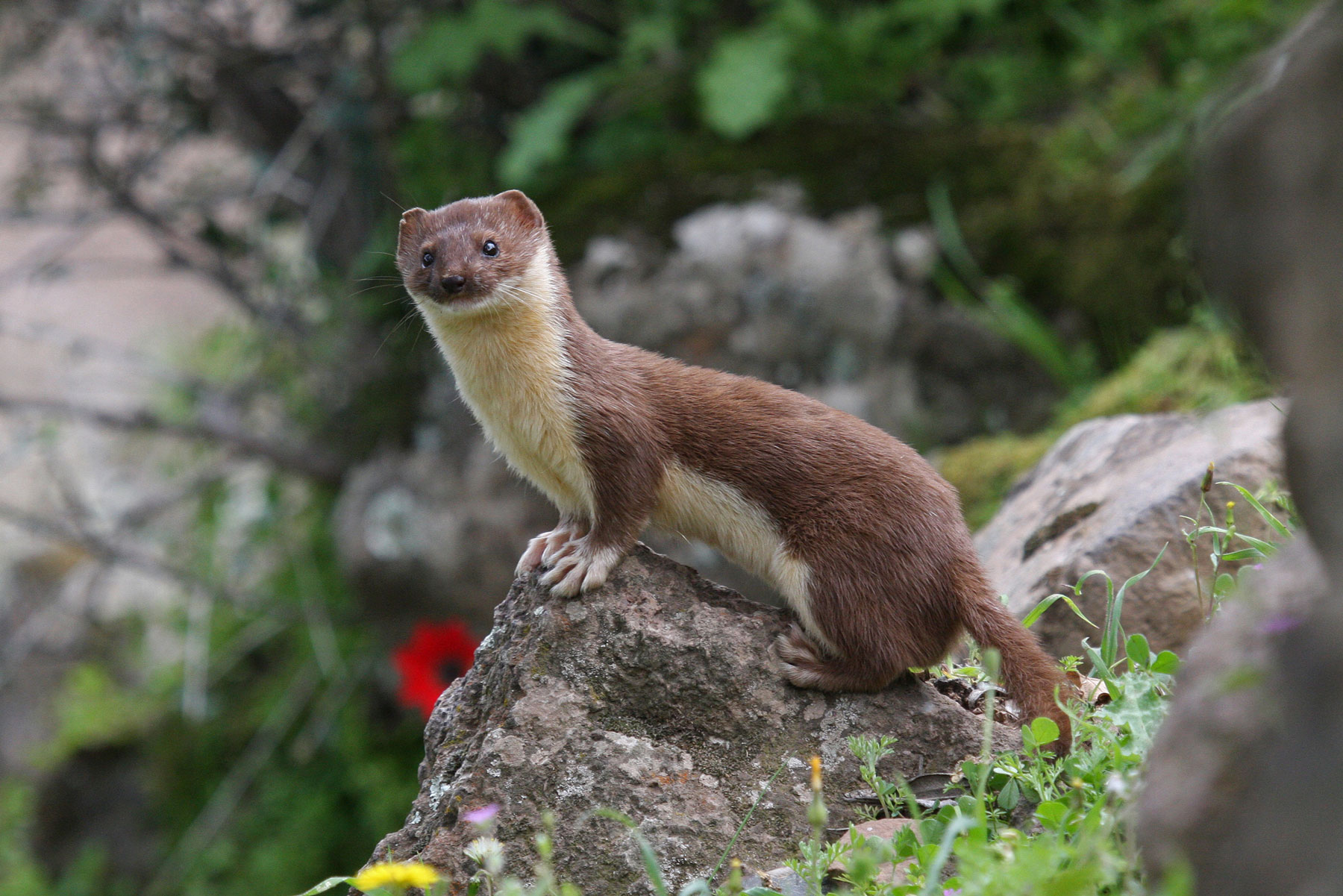
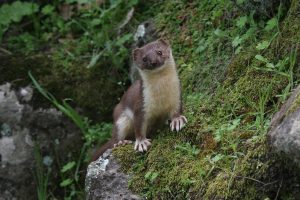
Most visitors to Great Smoky Mountains National Park will never encounter a weasel. Yet these small members of a diverse family of stealthy carnivores are here in Southern Appalachia—and are likely watching us even when we cannot see them.
The name “weasel” conjures up images of slippery, deceitful characters who often play the distastefully memorable villains of literature or film. This connotation, of course, is derived from what limited knowledge we have of these nimble, fur-bearing creatures who can “weasel out of” anything and who make an honest, if ruthless, living by being vicious and unrelenting predators.
I know because my ponds north of Asheville have been raided over the last two weeks. More than a hundred wood frog tadpoles disappeared virtually overnight, and then a large koi was attacked. At first it seemed the culprit was a long-tailed weasel, who was caught dining upon a 16-inch-long fish, though it was twice his size. However, two days later I spotted a mink on the edge of the pond, and he was later seen visiting after midnight on the trail cam. After a bit of research and speaking with some experts, I now suspect the weasel was simply feasting on what the mink left behind.
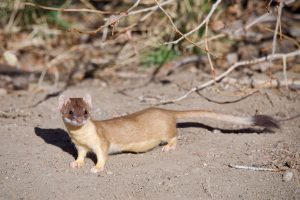
Both the mink and the long-tailed weasel are mustelids, one of the world’s most varied animal groups comprising 65 species. Some you have probably heard of are the ferret, marten, stoat, fisher, sable, polecat, badger, wolverine, and otter.
Mammals of the Smokies tells us that mink live in the vicinity of any waterway to be found in Great Smoky Mountains National Park “where there is sufficient cover and seclusion. Mink are extremely inquisitive and intelligent. In 2006 a mink had to be killed at the Oconaluftee Mountain Farm Museum after it killed several chickens and charged a park ranger!”
Long-tailed weasels also live along the watercourses, but they prefer to be near standing water and bird life. “Because of the small size and elongated body, long-tailed weasels have a high metabolism and are highly active day and night searching for prey,” says Mammals. “Like other mustelids, long-tailed weasels move in a series of gallops, arching their back with each bound. They use their keen sense of smell and hearing to locate prey.”
For some time, Smokies scientists have been wondering where the least weasels are. Science Coordinator Paul Super was working to confirm their presence in the park when one showed up under his next-door neighbor’s bird feeder in Waynesville, presumably the victim of a cat.

“This species could live throughout the park,” Super said. “But it has been found only twice, with dead specimens discovered at Clingmans Dome (2014) and near Gatlinburg (1997) now in our collections.”
Least weasels are extremely agile, bold, and inquisitive as they prowl and poke into small spaces seeking rodents to prey on. Researchers collaborating with Super expect they will be most common along the forest edge of open field and scrub areas such as Cades Cove, Cataloochee, and The Purchase.
The least weasel is the smallest member of the mustelid family, the smallest carnivore in North America, and even the smallest carnivore in the world. Yet despite its diminutive size, reinforced by its name, pound for pound this tiny creature has a more forceful bite than a lion, tiger, hyena, or any of the bears. Dr. Adam Hartstone-Rose of North Carolina State University specializes in the study of bite force. He found that the combination of a shorter jaw in relation to the size of its skull, powerful muscles delivering the force of the bite, and the concentration of the force in the weasel’s pointy canine teeth makes this tiny mammal a super predator unparalleled on the planet.
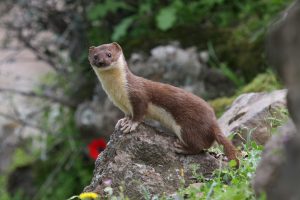
Hamed said that, according to wildlife ecologist David Jachowski at Clemson University, weasel populations appear to be rapidly declining in the United States as trapping records indicated a 96 percent reduction in the number of weasels trapped in the past 60 years. A changing climate is also predicted to negatively impact this more “northern” species.
“Given the fast metabolism of least weasels, they predominately hunt during temperatures requiring the least amount of additional metabolic demands to compensate for temperature differences,” Hamed said. “Therefore, a changing climate could impact activity patterns throughout the year. So, understanding the distribution of least weasels in GSMNP is critical to developing more detailed management strategies for our smallest carnivore and its prey communities.”
Funded by a Carlos Campbell Fellowship from the Great Smoky Mountains Conservation Foundation, Hamed and his students recently deployed nine wooden boxes that are essentially unbaited camera traps for detecting weasels in the park using a system that was developed in the Netherlands.
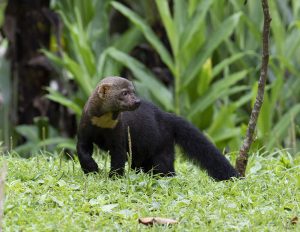
“The weasel’s instinct to explore holes entices them to enter the box where they are photographed,” Hamed said. “In the park, we have documented several small mammal species, but we have yet to find a least weasel. In Virginia, September to December is the best time to observe weasels in our Mostela boxes, and so we are excited for fall.”
A few years ago, I was riding in a van through a natural area in Costa Rica with a group of friends. We suddenly saw what looked like a large black otter crossing the road a few feet beyond our vehicle. Even our local naturalist guide was amazed as we watched the elusive and rarely seen tayra, another member of the mustelid family, lumber up into the forest, its unusually long spine creating an awkward, arching gait as it ran. That sighting, coupled with my recent pond pilfering, has piqued my interest in these secretive and solitary members of the animal kingdom, about which I plan to write more for Smokies Life journal.
Subscribe to get the latest posts sent to your email.
The Great Smokies Welcome Center is located on U.S. 321 in Townsend, TN, 2 miles from the west entrance to Great Smoky Mountains National Park. Visitors can get information about things to see and do in and around the national park and shop from a wide selection of books, gifts, and other Smokies merchandise. Daily, weekly, and annual parking tags for the national park are also available.